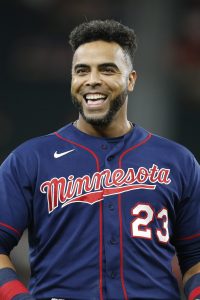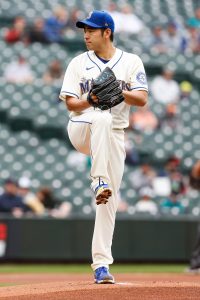The Rangers will have three representatives at tonight’s All-Star Game. Joey Gallo has been there before, and the slugger’s rare combination of light-tower power and athleticism could earn him a few more nominations before the end of his career. Kyle Gibson’s dominance this season has been surprising, but he’s an eight-year veteran with a generally solid track record. Few would’ve projected him to be an All-Star entering the season, particularly coming off a down 2020, but he was the team’s Opening Day starter. It wasn’t crazy to think he’d have a bounceback year.
Adolis García making the All-Star Game would’ve been inconceivable three months ago. He wasn’t even on the Rangers roster to start the year, having been designated for assignment so they could sign Mike Foltynewicz. In February, all twenty-nine other clubs were offered the opportunity to add García for nothing more than a 40-man roster spot and the standard $50K waiver fee. Each one passed. So García reported to Spring Training as a non-roster invitee and began the year at the alternate training site.
In retrospect, each team made an error in judgment in not putting in a claim for García (as did the Rangers for designating him in the first place). It’s hard to assign too much blame around the league, though. At the time of his designation, García was soon to turn 28 years old with all of 24 major league plate appearances under his belt. An obvious combination of power and speed had made him a fairly well-regarded prospect in Cuba and in his days in the Cardinals system, but scouting reports also came with question marks about his plate approach. His 2019 season in the minors did him no favors in that regard; García popped 32 homers and swiped 14 bags, but he also reached base at just a .301 clip and posted extremely concerning strikeout and walk rates (30.1% and 4.2%, respectively).
Given his first extended big league run after being re-selected in mid-April, García has continued to actualize his physical tools at the highest level. The right-handed hitting outfielder is surprisingly tied for eighth in the majors with 22 home runs this season. He’s sporting an impressive .270/.312/.527 line across 333 plate appearances. He leads all rookie position players in FanGraphs WAR and looks to be the midseason favorite to win the AL Rookie of the Year award.
It’s an open question whether García can continue to succeed at this level. His MLB strikeout and walk rates this season (30.6% and 4.8%) are eerily similar to those he posted during his last Triple-A campaign. He’s frequently chasing pitches outside the strike zone, and his 17.5% swinging strike rate is ninth-highest among the 231 hitters with 200+ plate appearances.
There’s still some chance García’s aggressiveness undercuts his production moving forward. Some players have enough power and athleticism to succeed in spite of a poor approach. It’s possible García’s that kind of talent, but he’ll need more than half a season of great play to cement himself within that rare group.
Whether or not García’s performance takes a step back in the second half, there’s no taking away what he’s accomplished to this point. To earn an All-Star selection just five months after clearing waivers is an incredible achievement. Among the players whose talents will be on display tonight, García’s had arguably the most meteoric rise.


